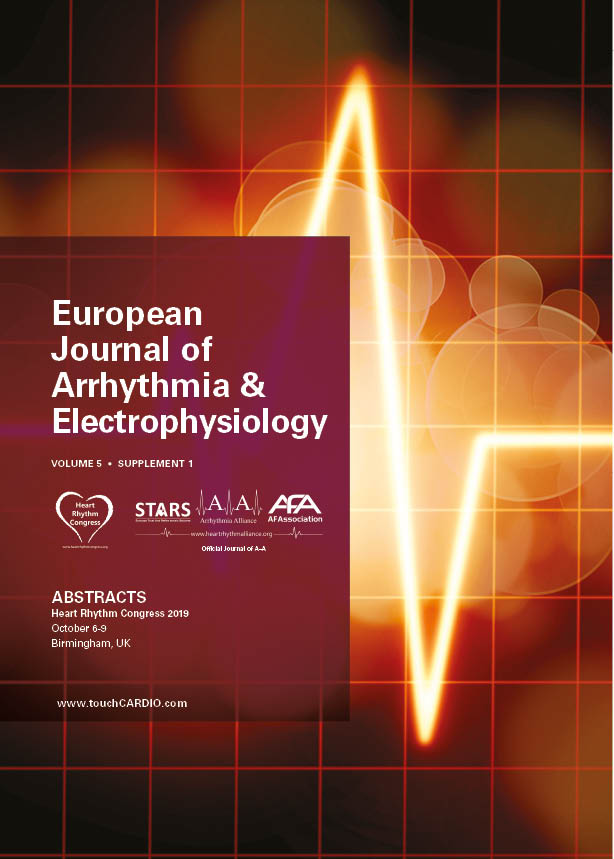EUROPEAN JOURNAL OF ARRHYTHMIA & ELECTROPHYSIOLOGY – VOLUME 5 SUPPLEMENT 1 – 2019

The official abstracts from the Heart Rhythm Congress (HRC) 2019.
Young Investigators Competition – Basic Science
Young Investigators Competition – Clinical Science
Oral Abstracts (1) – Allied Professionals & Service Improvement
Oral Abstracts (1) – AF – Clinical
Oral Abstracts (2) – Arrhythmia Mechanisms
Oral Abstracts (2) – Imaging and Clinical EP
Oral Abstracts (3) – Devices
Oral Abstracts (3) – Mapping and Ablation
Moderated Posters (1)
Moderated Posters (2)
Posters (1)
Posters (2)
Abstracts – Paediatric Session






